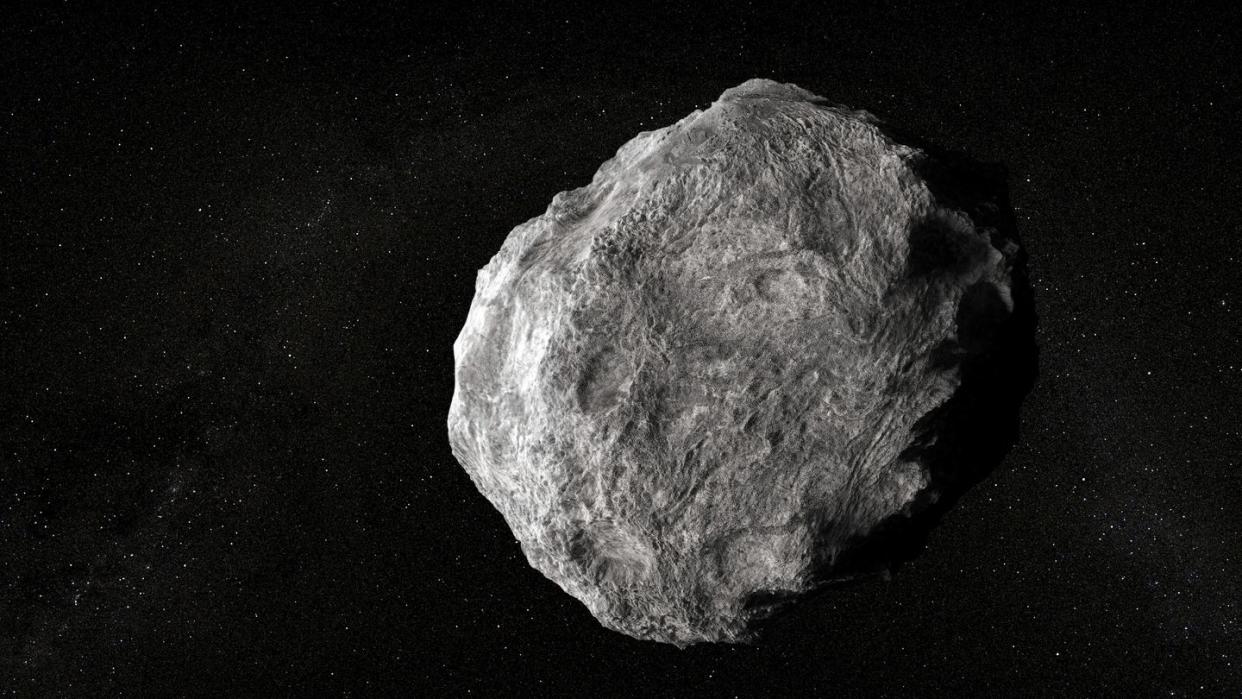This Ultradense Asteroid May Contain Elements We’ve Never Seen Before

"Hearst Magazines and Yahoo may earn commission or revenue on some items through these links."
There are more than a million objects in the Solar System’s asteroid belt. NASA’s even visited a few of them, such as Bennu and, soon, Psyche.
However, another asteroid named 33 Polyhymnia presents a perplexing mystery, as it appears to be denser than even the heaviest known elements on the periodic table.
A new study examines 33 Polyhymnia and suggests that the asteroid could be home to superheavy elements around atomic number 164, which we’ve never witnessed in nature.
Nestled in the asteroid belt in the 342-million-mile expanse between Mars and Jupiter lies 33 Polyhymnia. Named after the Greek muse of sacred hymns, the asteroid is just one of a million or so objects that make up that traffic jam of space rock between the inner and outer planets. But 33 Polyhymnia isn’t like other asteroids—astrophysicists theorize that it may be a compact ultradense object, or CUDO. And in fact, the incredible density of this particular asteroid may be a sign it contains elements that humans have never observed in nature.
The original measurements of 33 Polyhymnia suggest a weight of 75.28 g/cm3, a number so dense that the researcher who took those measurements said that the results were unrealistic.
But scientists at The University of Arizona decided to test whether such dense measurements were possible—all without resorting to the notoriously slippery descriptions of dark matter. Basing their calculations on the Thomas-Fermi Model, which helps illustrate basic atomic behaviors, the team realized that 33 Polyhymnia may be home to superheavy elements. These “new” elements would be stable around atomic number 164, which the researchers call an “island of nuclear stability.”
The results of the study were published in mid-September in the journal The European Physical Journal Plus.
“We chose this model, despite its relative imprecision, because it allows the systematic exploration of atomic behavior as a function of atomic number beyond the known Periodic Table,” University of Arizona’s Jan Rafelski, a co-author of the study, said in a press statement. “A further consideration is that it also enabled us to explore many atoms in the short time available.”
The heaviest known stable element is the rare platinoid metal known as osmium, which has an atomic number of 76. Other elements have been synthetically created with higher atomic numbers, but their extremely short half-lives mean that they are mostly used as laboratory tools. However, Rafelski and his team argue that outlier asteroids like 33 Polyhymnia could be home to theoretical elements around the atomic number 164—many times heavier than osmium. Their study confirms that such an element would have a density of 36 to 68.4 g/cm3, which more closely approaches the asteroid’s immense density.
“All super-heavy elements—those that are highly unstable as well as those that are simply unobserved—have been lumped together as ‘unobtainium,’” Rafelski said in the press statement. “The idea that some of these might be stable enough to be obtained from within our Solar System is an exciting one.”
NASA is currently in a rush to obtain samples from asteroids found in our Solar System. Earlier this week, they announced the presence of water and carbon in a sample obtained from the metal Bennu. They are also just about to launched a new mission toward the “metal world” Psyche, an asteroid rich in metals that’s also located in the asteroid belt.
Maybe with enough time and a little more research, CUDOs like 33 Polyhymnia may just catch the attention of NASA—eager to figure out exactly what elements may be hiding on these ultradense objects.
You Might Also Like

